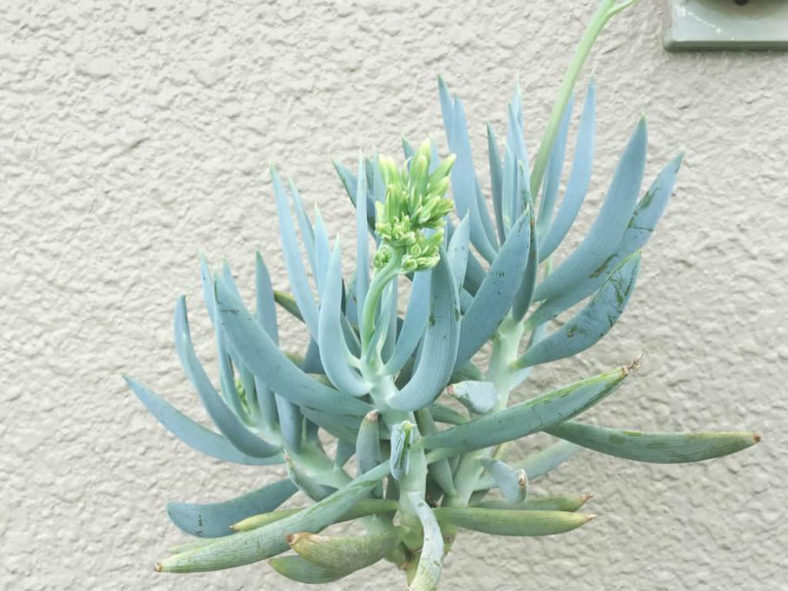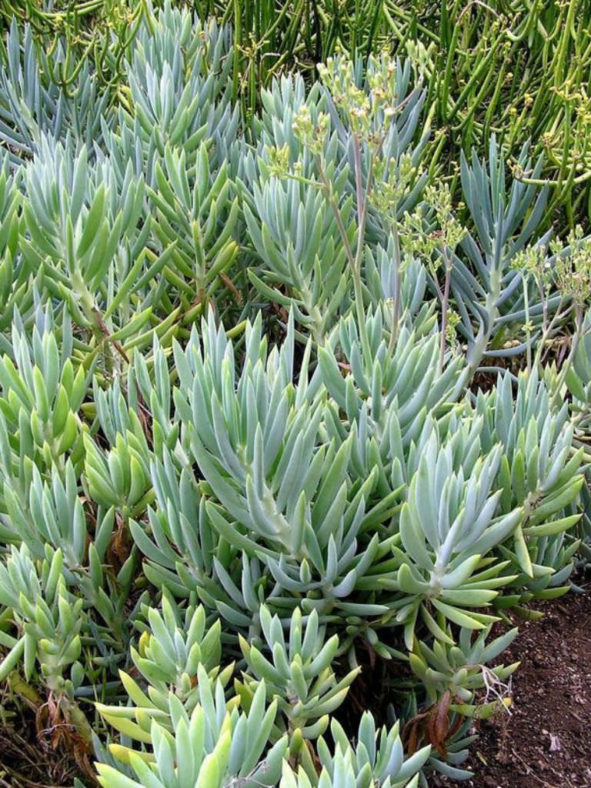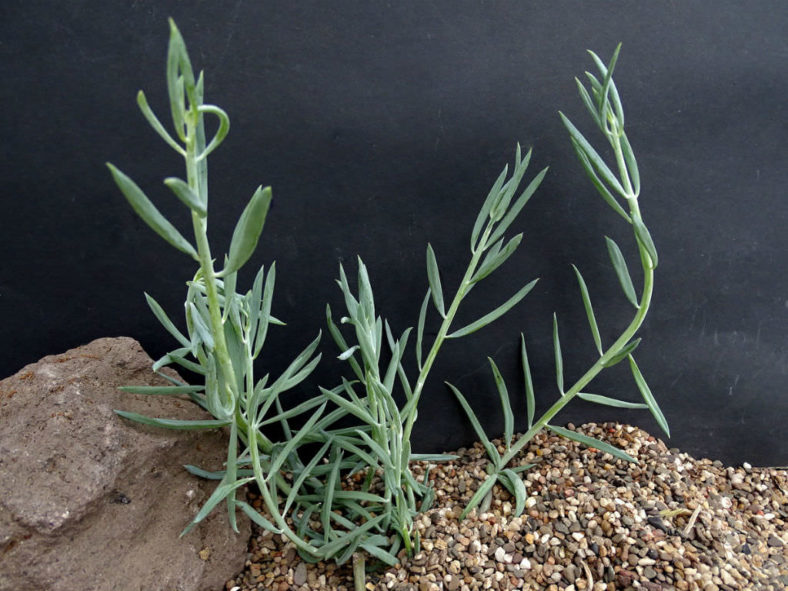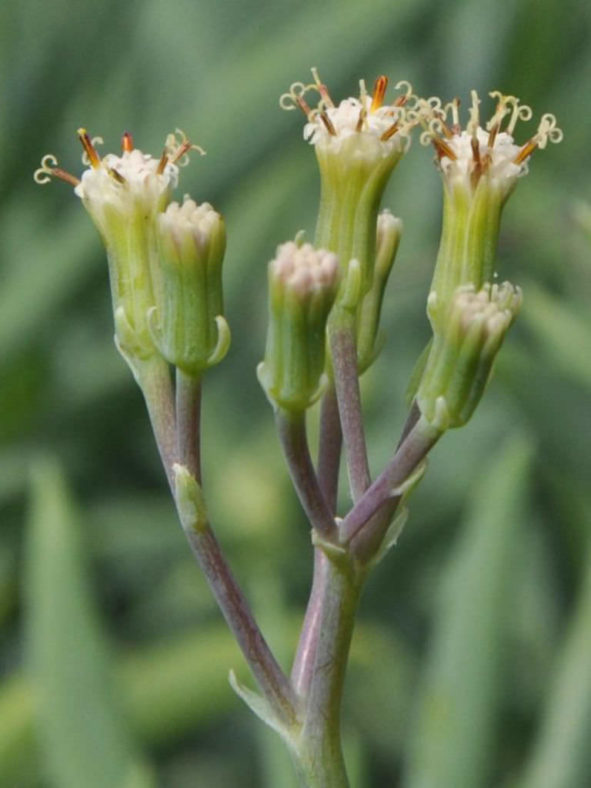Scientific Name
Curio ficoides (L.) P.V.Heath
Common Name(s)
Big Blue Chalk Sticks, Flat-leaved Senecio, Silver Senecio
Synonym(s)
Cacalia dulcis, Cacalia ficoides, Kleinia ficoides, Senecio ficoides
Scientific Classification
Family: Asteraceae
Subfamily: Asteroideae
Tribe: Senecioneae
Subtribe: Senecioninae
Genus: Curio
Etymology
The specific epithet "ficoides (pronounced fy-KOY-deez)" refers to the resemblance of the species to the family Aizoaceae, formerly known as Ficoidaceae.
Origin
Curio ficoides is native to South Africa.
Description
Curio ficoides, formerly known as Senecio ficoides, is a succulent shrub with fleshy, brittle branches arching upwards and snaking along the ground. It can reach a height of 3.3 feet (1 m) and spread to 10 feet (3 m) in diameter. The branches can grow up to 5 feet (1.5 m) long and 4.8 inches (12 cm) in diameter. The basal stems have leaf scars and can reach up to 8 inches (20 cm) in diameter. The leaves and stems are bluish to grey-green and covered with a powdery bloom. The thick, fleshy leaves are erect, tapering, laterally compressed, with longitudinal, somewhat translucent stripes, and can grow up to 6 inches (15 cm) long.
The flower heads are white, have no ray florets, and appear at the ends of the branches, usually from fall to winter.

How to Grow and Care for Curio ficoides
Light: Keep Curio plants in partial shade if outdoors, which is their preference in summer, and bright sunlight if indoors. They will grow in full shade but will become lank and leggy.
Soil: These plants prefer well-draining soil. For growing Curio indoors, using a container with at least one drainage hole at the bottom is essential.
Hardiness: Curio ficoides can withstand temperatures as low as 20 to 50 °F (-6.7 to 10 °C), USDA hardiness zones 9a to 11b.
Watering: Curio plants are drought tolerant, but the soil should never be left dry for too long. They need some water during the growing season, but be careful not to leave the soil wet for prolonged periods.
Fertilizing: The members of this genus can take a bit more fertilizer than other succulents if you want them to grow fast.
Repotting: You do not need to repot Curio plants often. You can do it when the container becomes too small or shallow.
Propagation: These plants can be grown from seeds or cuttings.
Learn more at How to Grow and Care for Curio.
Toxicity of Curio ficoides
Curio plants are toxic. Grow them with great care if you have children, pets, or livestock.
Cultivars of Curio ficoides
Links
- Back to genus Curio
- Succupedia: Browse succulents by Scientific Name, Common Name, Genus, Family, USDA Hardiness Zone, Origin, or cacti by Genus
Photo Gallery
Click on a photo to see a larger version.


